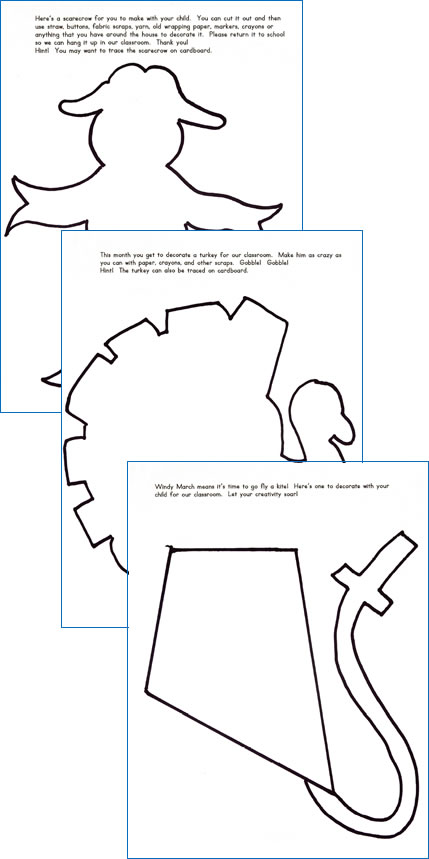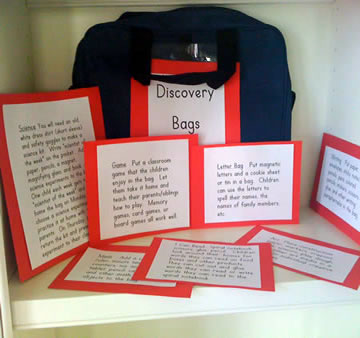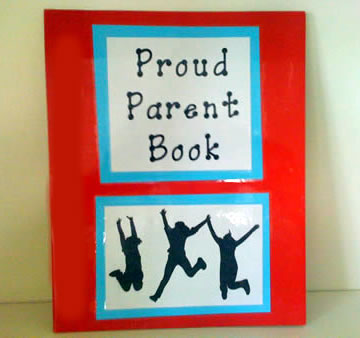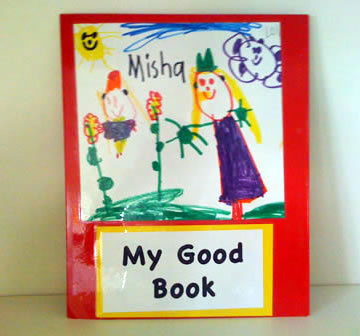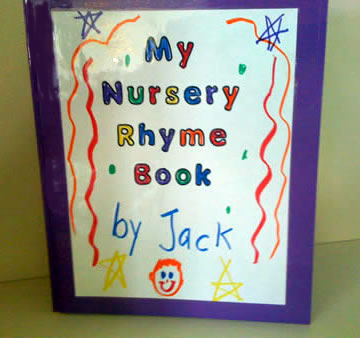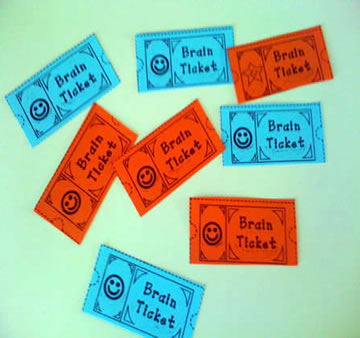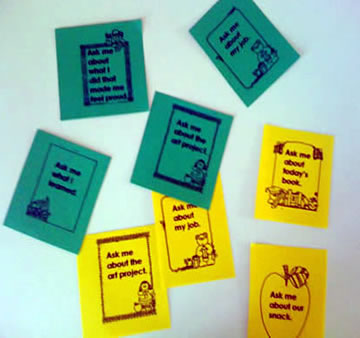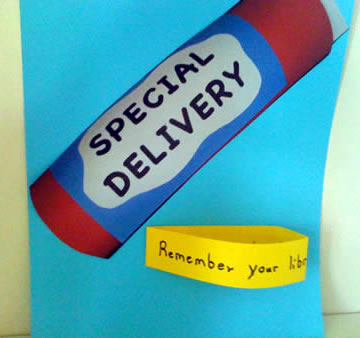Build that Bridge between Home and School
Home-School Connections
The best thing families can give young children is time and attention. You can be the catalyst for quality time and learning opportunities with some of these ideas.
Homework Folders
Skills: reading, math, writing, science, responsibility, organizational skills
Directions: Each child will need a pocket folder. Trace around their “left” hand on the left pocket. At the end of each day children put artwork or other papers in that pocket and it is “left” at home. Trace around their “right” hand on the right pocket. Homework sheets, permission slips, and other papers to be returned “right” back to school are put in that pocket.
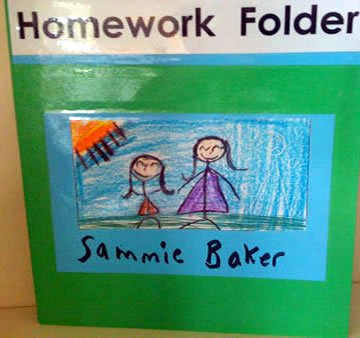
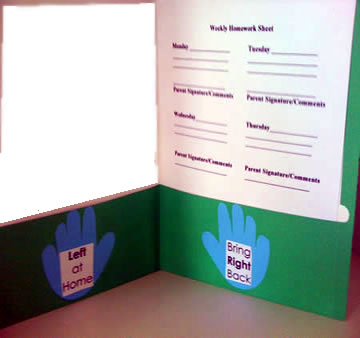
Create a weekly homework sheet to place in homework folders each week. Use some of the activities suggested on the following pages for interactive homework children can do WITH their parents. Remember, young children think having homework to do like older siblings is “cool.” You can develop responsibility and positive attitudes about homework that will stay with them in the future with exciting things they can do at home.
Sample Weekly Homework Sheet - Download a printable version here
Lunchbox Homework
Skills: reading, math, writing, social skills
Directions: You will need 2 or 3 lunchboxes and some individually wrapped snacks (pretzels, raisins, crackers, etc.) for this project. Each month look at your standards and think of an activity that parents could do at home to reinforce that skill. Place all materials needed to complete the task as well as a direction card for parents and a snack in the lunchbox. Rotate the lunch boxes through the class so each child has the opportunity to take it home during the month. Here are examples of skills and activities that would help parents understand what you are working on and how they could help their child work on the skill at home.

Hint! The snack seems to add the “magic” to lunchbox homework.
tie shoes (old shoe with large laces)
phone number – play phone and song (“Twinkle Little Star”) to help them
rhymes (rhyming puzzles) * scissor skills (scissors and scrap paper)
writing name (name puzzle, paper colored pencils)
shape recognition (stencils, play dough)
nursery rhymes (blank books from mrsdimminie.com)
counting (counting bears and “Count at Home” book)
retelling story (small flannel board and pieces to “The Old Lady Who Swallowed a Fly”)
colors (crayons and blank book)
motor skills (sponge ball or jump rope & rhymes)
Vary the skill level of the lunchboxes to meet the needs of your children.
Books, words to finger plays, tapes of songs, recipes, art projects, science experiments, or games can be used for lunchbox homework.
Book Buddy Bags
Skills: print connections, motivation, parent education
Directions: You will need cloth bags and stuffed animals to create book buddy bags. Fill each bag with a book and stuffed animal that coordinates with the story. You can also add an activity sheet similar to the one below. Add crayons and paper, play dough, etc. for the activity suggested.
1. Read the book to your child.
2. Let your child retell the story to the stuffed animal
3. Ask your child to draw a picture of his or her favorite part of the story.
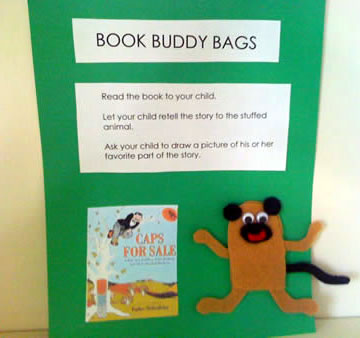
•When children return the book bag to school, invite them to sit in the “reader’s chair” or “teacher’s chair” and talk about the book.
Hint! Designate a special chair in your classroom as the “reader’s chair.” Spray paint gold or silver and decorate with fake jewels and fur.
Backpack Bear
Skills: motivation to read and write
Directions: Put a teddy bear, diary/spiral notebook, crayons, pencils, and some personal items for the bear, such as clothes, a toothbrush, blanket, etc. in a backpack. Children take turns wearing the backpack home and having the bear spend the night with them. Write a note similar to the one below asking parents to write stories about the bear’s adventures in the notebook. The teacher reads the notebook to the class the following day.
Hint! Let the children name the bear. If the teacher “treasures” the bear and acts like he’s REAL, the children will love him as well!
Dear Parents,
Your child has been selected to bring our class bear
home to spend the night. I know your child will have fun
playing with the bear and taking care of him. Please have
your child dictate a story about the bear as you write it in
the diary provided. The rest of the class will be excited
to hear about the adventures tomorrow in school.
Thank you!
Discovery Bags
Directions: Recycle old computer bags and briefcases into “discovery bags.” Fill bags with the items suggested below. If you create several of these, then each child will have the opportunity to take something home each week.
Writing - Put paper, envelopes, sticky notes, pencils, pens, colored pencils, Portfolio stickers, scissors, glue, and other writing paraphernalia in the bag.
Math Kit - Add a calculator, ruler, minute timer, counters, toy money, tablet, pencil, calendar, and other math related objects to the bag.
Science Kit - You will need an old white dress shirt (short sleeve) and safety goggles to make a science kit. Write “scientist of the week” on the pocket. Add paper, pencils, a magnet, magnifying glass, and book of science experiments to the kit. One child each week gets to be “scientist of the week” and take home the bag on Monday. They choose a science experiment and practice it at home with their parents. On Thursday, they return the kit and present the experiment to their classmates.
Game Bag - Put a classroom game that the children enjoy in the bag. Let them take it home and teach their parents/siblings how to play. Memory games, card games, or board games all work well.
Art Portfolio - Place construction paper, markers, crayons, glue, scissors, play dough, and other art media in a bag for individual creative activities.
Letter Land - Put magnetic letters and a cookie sheet or tin in a bag. Children can use the letters to spell their names, the names of family members, etc.
I Can Read - Spiral notebook, scissors, glue, pencil. Children look around their homes for words they can read on food boxes and other products. They can cut out and glue words they can read or write words they can read in the spiral notebook.
Art Projects
Send home seasonal cutouts for children to decorate with their families. Parents will be as excited as the children to see their creations hanging on the walls and halls! Click here to download patterns for Art Projects.
September – scarecrows
October – pumpkins or leaves
November – turkeys
December – gingerbread boys and girls
January – snow people
February – hearts
March – kites
April – umbrellas
May – flowers
Encourage the children to name their art projects and discuss how they made them with their parents. You could also save these each month and give them to the children at the end of the year as a special keepsake. Here are sample shapes you can download for each month. Hint! Enlarge the shapes or cut them out of tagboard or cardstock to make them easier to decorate.
